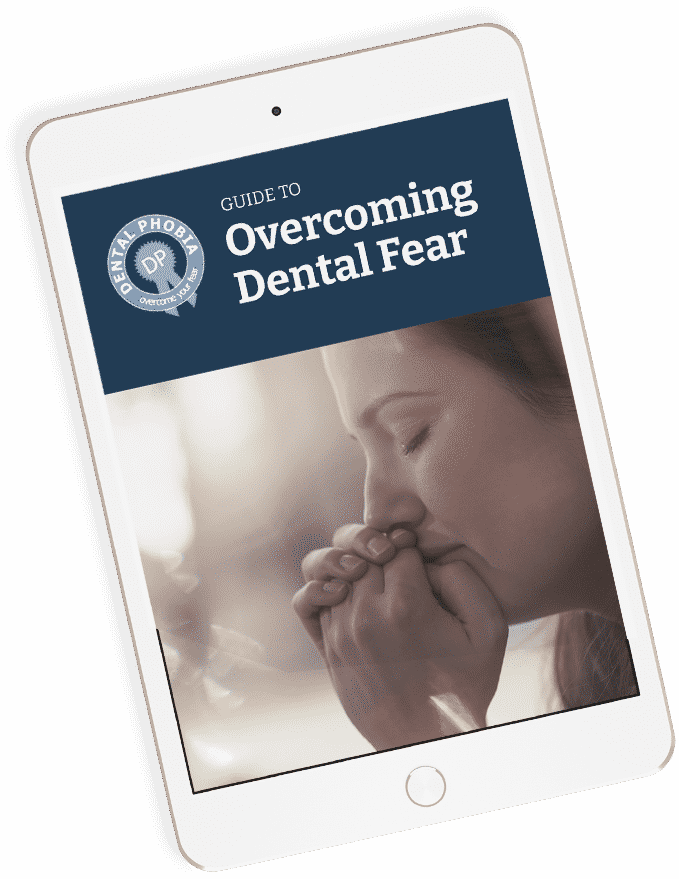

Fear of pain
Most of us would prefer not to suffer any pain. However, for people who suffer from dental phobia, the idea of the pain is often much worse than the pain itself.
Nobody likes going to the dentist. But for some people, the problems run deeper and form a phobia. The causes of dental phobia can be many and varied. This case study is of a patient whose dental phobia was centred on a fear of pain.
The Patient
Nargis was in her early-30’s and had been unable to visit her dentist for many years. One element in the phobia was her memory of having cavities when she was a young girl. She remembered the fillings as being very painful. This resulted in a desire not to return to the dentist, which became a phobia as she constantly delayed and missed appointments.
Most of us would prefer not to suffer any pain. However, for people who suffer from dental phobia, the idea of the pain is often much worse than the pain itself. In fact, Nargis was a contradiction in terms. While she was unable to visit the dentist because of a pain phobia, she suffered almost constant pain from teeth that eventually required urgent attention.
Similarly, many of us have childhood memories of visiting the dentist and experiencing pain. In the case of phobias, it is also important to remember that those visits were often long ago. Memories have become warped over time and, even if the pain was acute, modern dental practices means that patients feel much less pain nowadays than they did even as recently as ten years ago.
The Scenario
Because Nargis was suffering from an acute dental phobia, she had not seen a dentist for several years. Therefore as well as not receiving suitable levels of dental treatment, she had also lost any sense of a relationship with her dentist. This meant that she had had no opportunities to articulate her fears, express her concerns or gain any sort of professional reassurance. In fact, by staying away from the dentist she had probably increased her sense of fear as there had been nothing to counterbalance her imagination. All she had to create a mental picture of the dentist were her memories of painful childhood treatment.
At the same time, the pain in her teeth from not visiting the dentist was growing. One of the fillings that she had when she was younger had become loose and needed replacing. She was also suffering some pain from impacted wisdom teeth. The long time periods between her visits to the dentist meant that she had not just missed out on running repairs to her teeth. She had also missed out on the ongoing advice, proactive ideas and preventative care that dentists can offer. This may have helped her future visits to the dentist to go more smoothly and to be pain-free.
The Symptoms
The symptoms for of Nargis’s dentalphobia were shortness of breath and difficulty breathing. At the thought of visiting the dentist, she would experience tightness in her chest and anxiety. The thought of experiencing these types of symptoms while in the dentist chair acted as an additional factor in her phobia, heightening the sense of fear.
In this case, the symptoms were probably a natural response by the body. After all, the patient’s brain is giving advance warning to the rest of the body that pain is coming. The problem is that the warning from the brain and the body’s response are disproportionate to the threat in question.
One of the biggest challenges that the dental community faces is ensuring that new, improved treatments are accessible and understandable for people. As more and more products emerge onto the dental market, it is increasingly easy for patients to become confused, apprehensive and nervous about what their dentist is offering them. At the heart of the commitment to helping individuals who suffer from dental phobia are the efforts of dental professionals to improve communication, put people at their ease and make sure that their patients realise that they are all valuable customers.
The Solution
With this type of phobia, which concerns the fear of pain as much as the pain itself, it is important that patients gain a clearer understanding of the type of treatment and level of care that they can expect. As much as anything else, they need to find a dental environment where they feel as relaxed, comfortable and cared for as possible. This could include factors such as the atmosphere in the reception and the waiting room, as well as the manner and skills of the dentist.
Nargis was able to overcome her phobia partially by simply talking to her dentist. Once she was able to visit the surgery and was able to see how much it had changed, she was far more comfortable. She found a dentist with experience of treating her condition, who had the expertise and people skills to talk her through possible treatments and procedures and to allay her fears.
In this case, further steps were not necessary as Nargis was able to overcome her phobia with help from her dentist. However, there are now also a number of other techniques available, such as sedation and distraction techniques, which can also help people with more acute phobias.
As is usually the case with phobias, once the patient has an understanding of what is causing it and how they can overcome it, they escape the cycle of fear. It is usually the case that a patient who is gripped by fear will be so uptight that they jump at the slightest touch. If they do feel any pain, they are so sensitive to it that it feels much worse.
On the other hand, a patient who is less afraid of feeling pain will be more relaxed when seeing the dentist. The likelihood is that, therefore, they will be much less likely to react with fear to their dental treatment.

